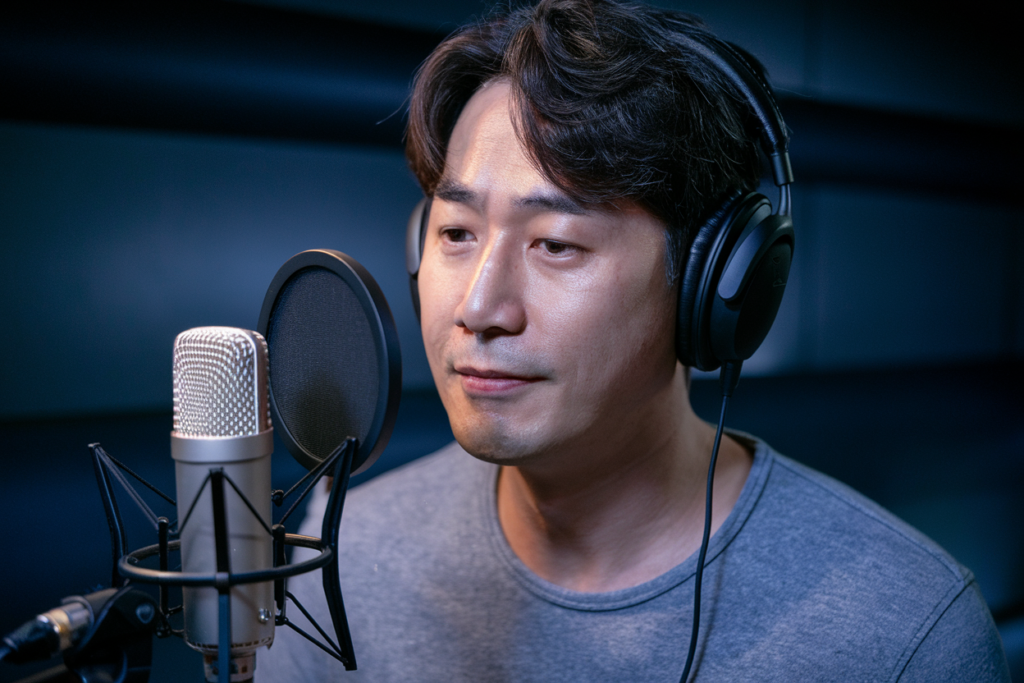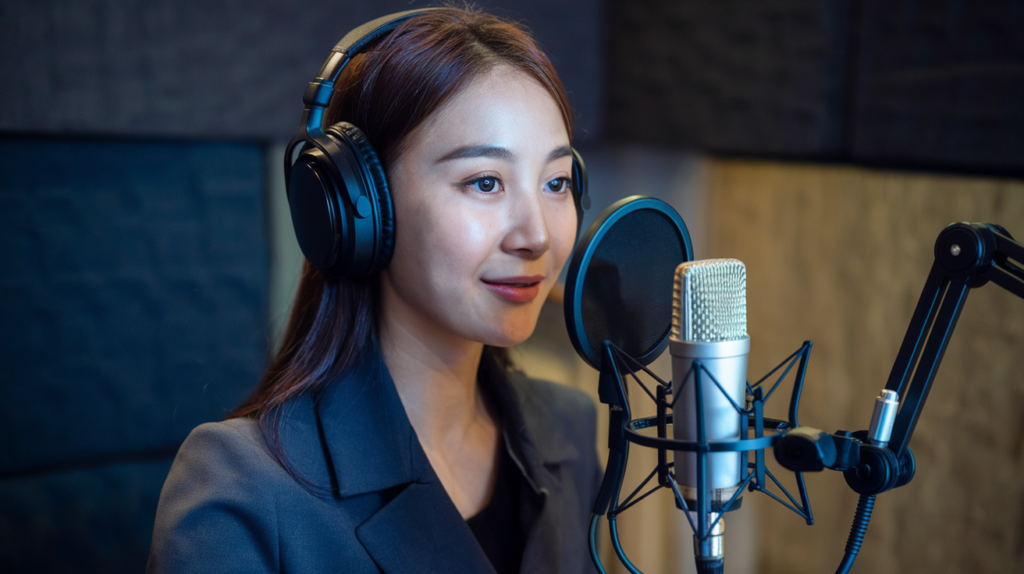Key Takeaways
- Role of Dubbing: Korean dubbing is essential for adapting international content, requiring skilled voice actors to deliver performances that align with cultural relevance and character essence.
- Lip Movement Importance: Effective lip synchronization enhances viewer engagement; discrepancies can distract from the story and emotional connections.
- Cultural Nuances: Voice actors must adapt not only dialogue but also emotional tones to resonate authentically with local audiences, considering cultural differences in expressions.
- Technical Precision: Successful dubbing involves aligning speech patterns with on-screen lip movements, necessitating exceptional timing and pacing skills supported by advanced technology.
- Traditional vs. Modern Techniques: Both traditional live recording methods and modern software advancements contribute to the quality of Korean dubbing, showcasing a blend of artistry and technical expertise.
- Audience Reception Impact: Misaligned lip movements can affect immersion; however, authentic performances by voice talent help maintain emotional connections despite these discrepancies.
Ever watched a Korean drama and wondered why the characters’ lips don’t quite match the dialogue? You’re not alone! The art of Korean dubbing involves a fascinating interplay between voice acting and lip synchronization that can make or break your viewing experience.
Overview Of Korean Dubbing
Korean dubbing plays a crucial role in bringing international content to local audiences. The process involves skilled voice actors who provide voiceovers that match the essence of the original characters while ensuring cultural relevance. You might notice that lip movements sometimes don’t sync perfectly with the spoken dialogue, which is often a result of adapting scripts for natural flow.
Voice talent in Korea meticulously studies character nuances to deliver performances that resonate with viewers. These voice artists bring life to characters by capturing emotions and personality traits, which enhances engagement despite any discrepancies in lip synchronization.
Effective dubbing requires not just technical skills but also an understanding of timing and pacing. Voice over talent must adapt their performances to fit varying lengths of dialogue while maintaining authenticity. This balance between creativity and precision ensures a seamless viewing experience.
In recent years, advancements in technology have improved dubbing quality significantly. High-quality recordings and editing techniques help bridge gaps where visual and audio elements may not align perfectly. As you explore Korean dramas or films, appreciate the artistry behind the voices that breathe life into your favorite characters, even if their lips don’t always match what they say.
Importance Of Lip Movement In Dubbing
Lip movement plays a crucial role in the effectiveness of dubbing. When watching a dubbed show, you expect to see characters’ lips move in sync with their dialogue. Discrepancies can distract from the story, making it harder to connect with the characters and their emotions.
Cultural Context
Cultural nuances shape how voice actors approach their performances. In Korean dubbing, voice talent often adapts not just the words but also the emotional tone behind them. Certain expressions or phrases may carry different meanings across cultures, so skilled voice artists ensure that their delivery resonates authentically with local audiences. This cultural awareness enhances viewer engagement, allowing for a more immersive experience.
Technical Aspects
Technical precision is essential for successful dubbing. Voice actors must align their performance with on-screen lip movements while maintaining natural speech patterns. This requires exceptional timing and pacing skills; they adapt their dialogue to match varying lengths without losing authenticity. Advanced technology aids this process by providing tools that help synchronize sound and visuals better than ever before, bridging gaps between audio and visual elements seamlessly.
In sum, effective lip movement synchronization elevates your viewing experience when enjoying dubbed content. By appreciating these technical and cultural efforts behind each voiceover performance, you enhance your understanding of what makes great dubbing work.
Korean Dubbing Techniques
Korean dubbing combines artistry and technical skill, ensuring that the emotional depth of characters resonates with local audiences. Various techniques enhance the overall experience for viewers.
Traditional Methods
Traditional methods in Korean dubbing emphasize live recording sessions where voice actors perform together. This approach fosters natural interactions among performers, allowing for genuine chemistry to emerge. Voice talent often relies on their instincts and improvisational skills to capture the nuances of each character. Additionally, understanding cultural references is essential; voice artists adapt dialogues to reflect local expressions while maintaining the original intent.
Modern Advances
Modern advancements in technology have transformed Korean dubbing significantly. Enhanced software now allows for precise timing adjustments, helping voice over actors sync their performances more accurately with lip movements on screen. The use of digital audio workstations enables sound engineers to manipulate recordings effectively, resulting in smoother transitions and clearer audio quality. Furthermore, artificial intelligence tools assist in analyzing speech patterns, providing valuable insights that help refine performances and ensure they align closely with visual elements.
Collectively, these techniques—both traditional and modern—showcase the dedication required in Korean dubbing. They highlight how skilled voice actors translate emotions into captivating performances that enrich your viewing experience.
Lip Movement Comparison
Korean dubbing showcases unique challenges, particularly in aligning lip movements with spoken dialogue. This section examines how these discrepancies manifest between Korean and other languages.
Between Korean And Other Languages
Lip movement synchronization varies significantly when comparing Korean to other languages. In many cases, the phonetic structures differ, causing voice actors to adapt their performances for alignment. For instance, the fluidity of spoken English often contrasts sharply with the more compact articulation found in Korean. This mismatch can lead to noticeable differences where characters’ lips may not sync perfectly with the translated words. Voice artists must tap into their skills, adjusting timing and expression while maintaining cultural nuances that resonate with local audiences.
Impact On Audience Reception
The impact of lip movement discrepancies on audience reception can’t be understated. When viewers notice misaligned lip movements, it can break immersion and distract from emotional connections with characters. Skilled voice actors navigate this challenge by infusing their performances with authenticity and emotion that transcend language barriers. Properly executed dubbing enhances engagement despite any visual mismatches, allowing stories to resonate deeply within different cultures. Ultimately, a well-synchronized performance—regardless of minor lip movement issues—can elevate a viewer’s experience and foster a lasting connection to the content being presented.
Challenges In Korean Dubbing
Korean dubbing faces several notable challenges that affect the overall viewing experience. These hurdles often arise from synchronization issues between dialogue and lip movements, as well as the necessity to convey cultural nuances.
Synchronization Issues
Synchronization remains a primary challenge in Korean dubbing. When adapting international content, voice actors must ensure that their spoken words align closely with characters’ lip movements. The phonetic differences between languages can complicate this process. For example, the compact articulation of Korean contrasts sharply with the fluidity found in English, leading to potential mismatches. Viewers may notice when lips don’t sync perfectly with dialogue; such discrepancies can disrupt immersion and emotional connections. Skilled voice talent navigates these challenges adeptly, infusing their performances with authenticity and emotion to bridge any gaps effectively.
Cultural Nuances
Cultural context plays a crucial role in successful dubbing. Voice artists adapt not only the words but also the emotional undertones of dialogues to resonate with local audiences. This adaptation involves understanding idiomatic expressions and cultural references unique to Korea, ensuring that humor or sentiment translates appropriately for viewers. By capturing these nuances, voice over actors enhance relatability and foster deeper engagement with stories being told through dubbed content. The dedication of voice talent in mastering both language intricacies and cultural subtleties elevates the audience’s enjoyment while providing an authentic viewing experience.
These challenges underscore the artistry involved in Korean dubbing—a complex interplay of technical skills and cultural understanding that ultimately enriches how stories connect across different cultures.
Conclusion
Korean dubbing showcases the remarkable blend of artistry and technical skill that transforms international content into relatable experiences. While mismatched lip movements can be distracting you can still appreciate the emotional depth brought by talented voice actors. Their ability to adapt language and culture elevates the viewing experience despite any synchronization challenges.
By recognizing these efforts you can gain a deeper understanding of how dubbing enhances storytelling across cultures. As technology continues to advance it’s exciting to see how these innovations will further improve alignment in future productions. Embrace the nuances of Korean dubbing and enjoy the rich performances that breathe life into your favorite characters, making them feel right at home on screen.
Frequently Asked Questions
What is Korean dubbing in dramas?
Korean dubbing refers to the process of replacing the original dialogue in television dramas with a new voiceover in Korean. This adaptation allows international content to be accessible and relatable for local audiences, enhancing their viewing experience.
Why is lip synchronization important in dubbing?
Lip synchronization ensures that spoken dialogue aligns with the characters’ mouth movements. Proper synchronization helps maintain immersion and emotional connection, while mismatches can distract viewers from the story being told.
How do voice actors adapt dialogues for local audiences?
Voice actors study character nuances and cultural context to adapt dialogues effectively. They modify emotional tones and expressions to ensure the dubbed content resonates well with local viewers, preserving the essence of the original performance.
What are some challenges faced in Korean dubbing?
Challenges include synchronizing speech with lip movements due to phonetic differences between languages. Additionally, voice actors must convey cultural nuances while maintaining authenticity, which can complicate their performances.
How has technology impacted Korean dubbing?
Recent advancements in technology have improved sound synchronization and audio quality during the dubbing process. Enhanced software tools allow for precise timing adjustments, making it easier for voice actors to create captivating performances that align better with visual elements.







